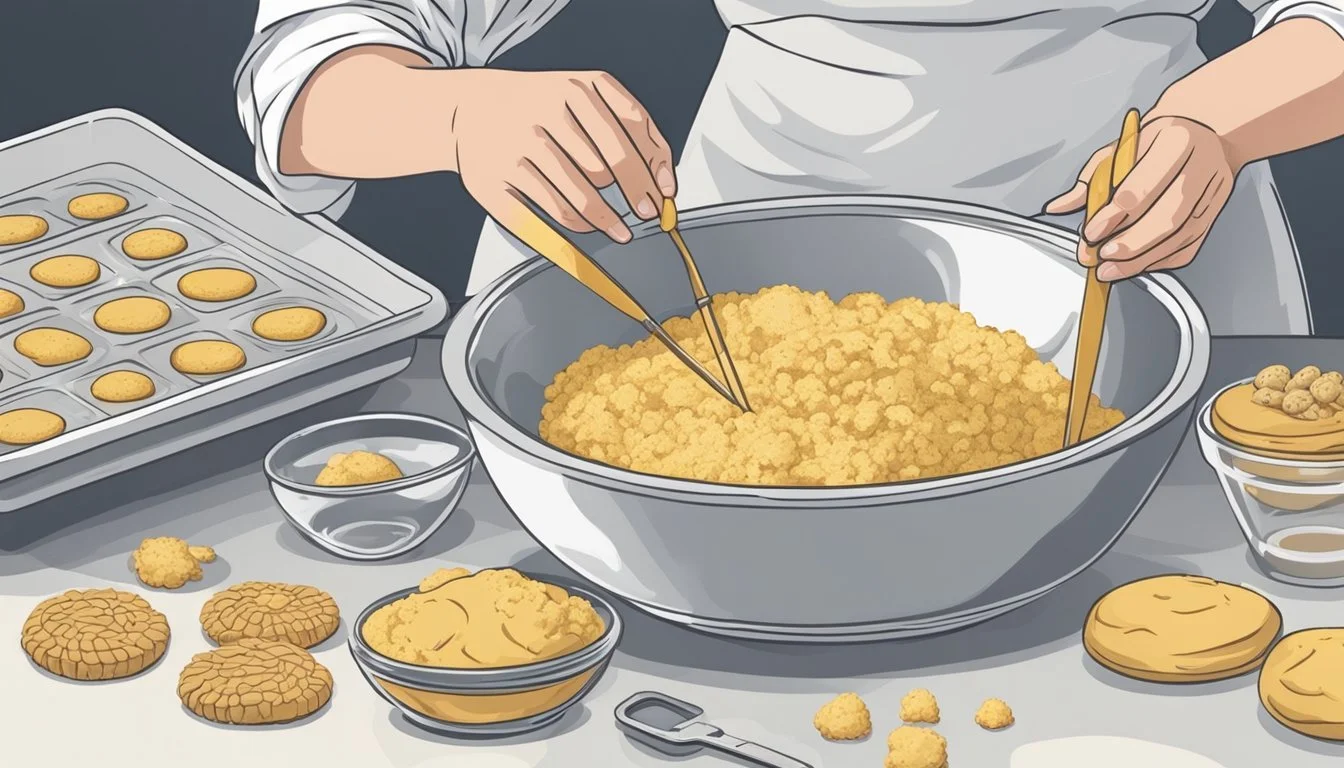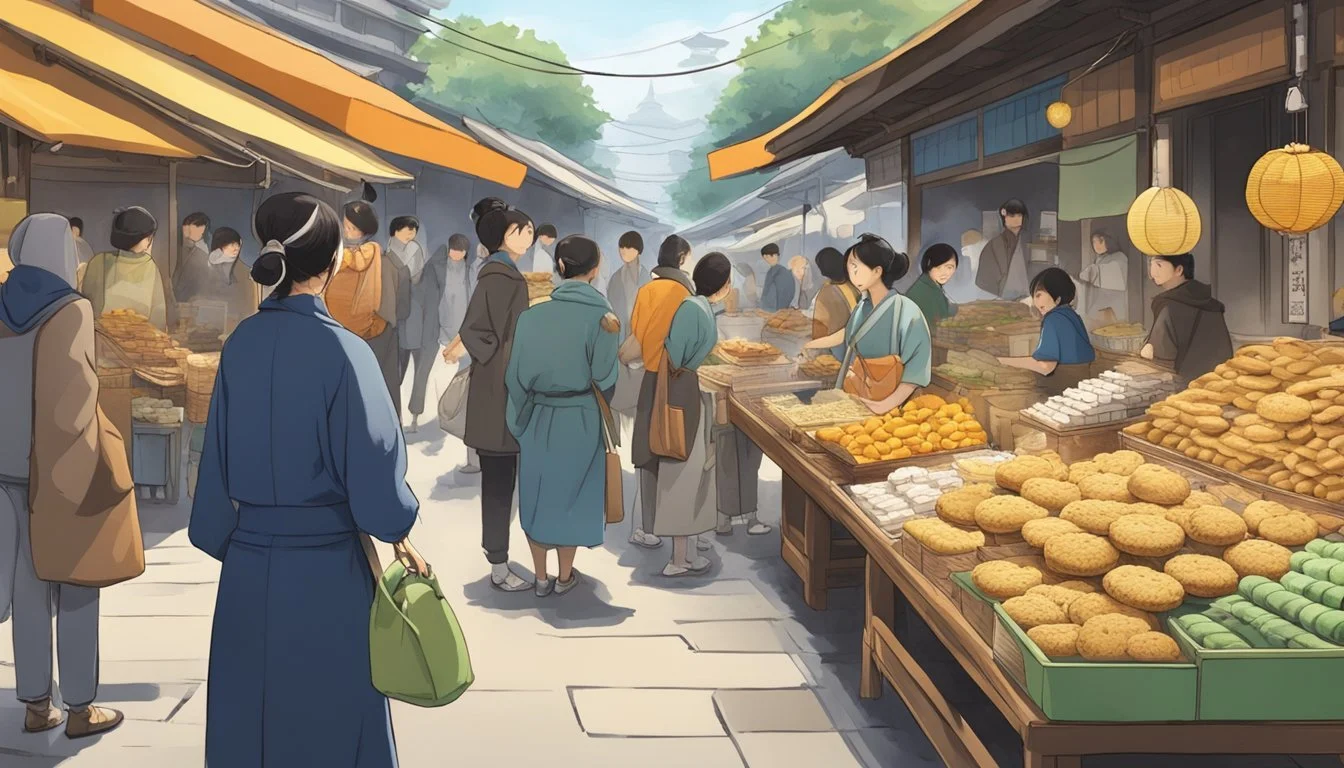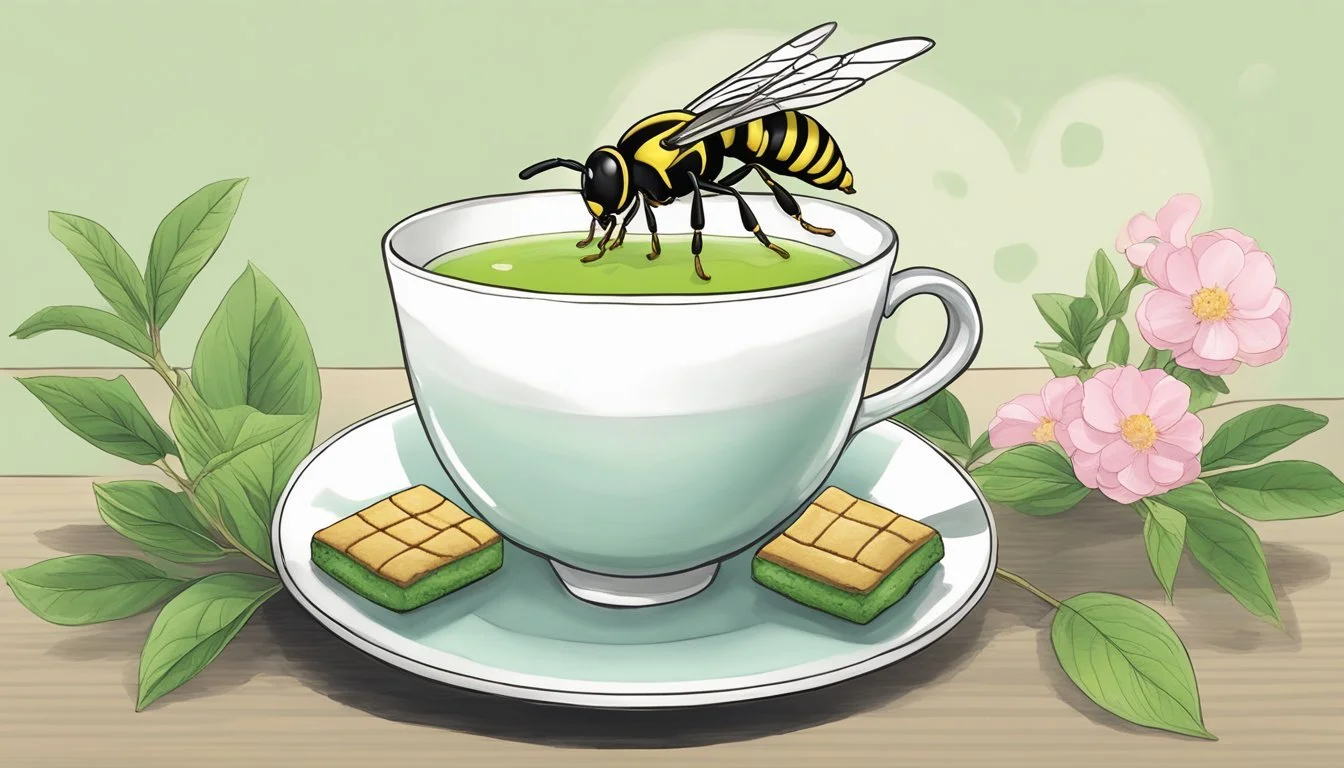Wasp Cookies
Japan's Unique Treat That Packs a Punch - Exploring an Unconventional Delicacy
Japan is renowned for its eclectic mix of traditional and modern culture, which is also reflected in its culinary offerings. Among a variety of unique treats and snacks that one may encounter in Japan, wasp cookies stand out as one of the most unusual. Known as jibachi senbei in Japanese, these rice crackers incorporate an unexpected ingredient: digger wasps. These insects are not just a surprise element but are a deliberate inclusion by the creators of this snack, integrating a local custom from the rural areas into a culinary novelty.
In the village of Omachi, situated in the mountainous regions of Japan, wasp cookies are made with a sense of tradition and community. The process begins with local elderly wasp hunters who skillfully trap these insects in the wild. Once captured, the wasps are boiled and dried, which is a critical step to prepare them for their final destination: embedded within senbei rice crackers. This practice marries the crunchy texture of the crackers with the nutrient-rich wasps, creating a snack that is both a source of protein and a conversation starter.
While wasp cookies may sound intimidating to the uninitiated, they are a testament to Japan’s innovative spirit in the realm of food. Each cookie offers a unique taste experience that encapsulates the boldness of traditional Japanese gastronomy. The creation of jibachi senbei is not merely about producing a snack; it reflects the resourcefulness and respect for local ingredients that is deeply embedded in Japanese culture. As such, wasp cookies symbolize more than an adventurous treat—they represent a vital link to the customs and natural environment of the regions like Omachi and, by extension, Japan's rich culinary heritage.
Origins of Wasp Cookies
Wasp cookies, a novelty treat in Japan, emerge from a blend of traditional practice and culinary curiosity. They tie closely to the local wasp-hunting culture and the unique utilization of insects in Japanese cuisine.
Traditional Origins
The conception of wasp cookies—known as Jibachi Senbei—is attributed to the Omachi region of Japan. Elderly residents there, who are adept at wasp hunting, are the pioneers of this unique snack. These individuals, many in their 80s, form the core of the Omachi Jibachi Aikokai fan club, a group dedicated to the tradition of capturing digger wasps and creating these distinct senbei rice crackers with the wasps embedded within.
Wasp Hunting in Japan
Wasp hunting is a respected, albeit niche, practice in rural Japan. Particularly in the town of Omachi, the elderly wasp hunters set out to capture the digger wasps, which play a critical role in the production of their celebrated Jibachi Senbei. They employ traps set in the surrounding forests to ensnare the wasps, which are then boiled and dried, ready to be incorporated into the snack.
Hachinoko Cuisine
The use of insects in food, known in Japan as Hachinoko cuisine, has a storied history. While the wasp cookies offer a vivid example of this tradition, it's not the only manifestation. Gifu Prefecture and the village of Kushihara, for instance, celebrate wasps in the Hachinoko Gohan—a dish combining cooked rice with wasps. Each November 3rd, the Hebo Matsuri festival serves as a testament to the insect's role in the regional diet, with wasp fans gathering to honor the cultural significance of wasps in Japanese sweets and dishes.
Preparing Wasp Cookies
Wasp cookies, known in Japan as jibachi senbei, incorporate wasps into the traditional rice cracker treat. These edibles provide a mix of savory and sweet with a distinct texture.
Selecting the Wasps
In Omachi, Japan, elderly wasp hunters specialize in trapping local digger wasps for the creation of jibachi senbei. The process is meticulous, ensuring that only the best quality wasps are selected. Hunters often use traps in the forest to capture the wasps, which are then boiled to purify them and later dried. The wasps must be handled carefully to maintain their integrity for the baking process.
The Baking Process
The backed wasps are then incorporated into the senbei — a type of traditional Japanese rice cracker. These crackers typically have a slightly sweet taste, balanced with a bitter hint from the wasp larvae. The mixture of rice cracker ingredients, which includes the necessary addition of wasp larvae, is compressed and cut into discs before baking.
Ingredients
Rice flour: The primary component of the cracker, providing its texture and base flavor.
Sweeteners: Such as syrup or sugar, added to create a subtle sweetness.
Milk: Occasionally included to enrich the dough.
Chocolate: Sometimes used for coating or adding sweetness to balance the bitter wasp flavor.
Wasp larvae: Prepared as detailed above, the larvae provide a crunchy texture and a unique taste.
The combination of these ingredients results in a snack that is both sweet and savory, with a distinct crunch from the included wasp larvae.
Culinary Profile
The culinary profile of Wasp Cookies, or Jibachi Senbei as they're known in Japan, reveals a unique blend of flavors and textures. These treats challenge the palate and offer a glimpse into the adventurous side of Japanese cuisine.
Taste and Texture
Wasp Cookies offer a juxtaposition of savory and sweet elements, creating a complex flavor profile that's surprisingly balanced. The crisp texture of the senbei rice cracker contrasts with the chewiness of the wasps. Customers often describe an initial apprehension that gives way to curiosity upon the first bite. The taste is predominantly savory with a hint of sweetness from the rice, while the wasps themselves add a nutty flavor.
Texture Profile:
Rice cracker: Crisp, crunchy
Wasps: Chewy, firm
The sensation in the mouth is one of contrasting textures that make for an engaging eating experience. One can feel the individual wasps within the cracker, which can be startling yet intriguing.
Nutritional Value
Wasp Cookies are not only a culinary curiosity but also a source of protein. The inclusion of wasp larvae and adults in the senbei brings a boost of nutritional benefits.
Nutritional Highlights:
High in Protein: Essential for muscle repair and growth
Contains a variety of Vitamins and Minerals
While these cookies may not be the heaviest option calorie-wise, they are substantial in terms of protein content. Additionally, these snacks provide a diverse range of nutrients, likely consumed less for their nutritional content and more for their novelty.
Cultural Significance
Wasp cookies, known as Jibachi Senbei, are not only a unique gastronomic experience but also carry deep cultural relevance in Japan. Throughout the years, they have been both a subject of curiosity and a traditional delicacy that underscores the connection between local customs and natural resources.
Festivals and Celebrations
In Japanese culture, festivals often showcase local specialties, and Jibachi Senbei is such an example. These traditional treats made with wasps are particularly associated with specific regions, like the village of Omachi. During local festivals or events, these cookies emerge as a culinary highlight, reflecting the community's pride in their heritage. They are also encountered as offerings in onsen towns, linking the experience of natural hot springs with the indulgence in local cuisine.
In Modern Japanese Cuisine
With a deep-seated respect for traditional foods, Japan carefully integrates them into modern dining experiences. Jibachi Senbei finds its place in souvenir shops, representing the daring side of Japanese desserts. As a contrast to the sweeter, more common Japanese desserts like mochi or dorayaki, wasp cookies invite locals and tourists alike to explore the broader spectrum of traditional confections that Japan has to offer.
Where to Find Wasp Cookies
Wasp cookies, a unique culinary offering, can be acquired in specific locations within Japan and through online platforms. These coveted treats integrate the unconventional but traditional ingredient of wasps, making them a distinctive souvenir.
Local Specialty Stores
In Japan, particularly the village of Omachi in Gifu prefecture, one can find these rare cookies. These are often available at specialty stores that focus on local delicacies. Seasonal availability can vary, but one might have better chances during certain times of the year like November, which is known for local festivals celebrating wasp-related cuisine.
Tokyo: Visitors may seek Tokyo's souvenir shops; however, wasp cookies are a regional delicacy and might not be readily available in mainstream stores.
Gifu: Specialty shops in Omachi are the primary source for authentic wasp cookies, especially around the time of local festivals dedicated to this unique food.
Online Marketplaces
For those unable to travel to the direct source, online marketplaces like Amazon provide an alternative to purchase these snacks. Due to their niche nature, availability may be limited and could require some searching.
Amazon: It is possible to find vendors selling Japanese snacks, but wasp cookies might not always be in stock due to their unique and specialized nature.
Remember, purchasing these cookies from reputable sources ensures authenticity and supports the traditional practices employed in their creation.
Consumption and Pairings
When indulging in wasp cookies, the experience is enhanced by the right combination of beverages and sides. It's not just about the unique flavor of the cookies, but also how they complement other tastes and textures.
How to Eat Wasp Cookies
One does not simply bite into a wasp cookie; there's an art to enjoying this delicacy. The texture of these rice crackers is crisp, embedded with the distinctive crunch of digger wasps. They are typically savored as is, allowing one to appreciate the fusion of flavors and textures without additional components overpowering the wasps' contribution.
Drinks and Side Dishes
Pairing wasp cookies with beverages and sides can elevate the snacking experience. Here's a quick guide to what complements their unique taste:
Beverages:
Matcha Tea: The slight bitterness of matcha balances the savory notes of the cookies.
Coffee: A robust coffee can stand up to the strong flavors, providing a harmonious contrast.
Cream-based drinks: These can soften the intense flavor profile, offering a creamy counterpoint.
Side Dishes:
Sweet Rice Dumplings: For those who prefer a sweet and savory combination, the subtle sweetness contrasts the umami-rich wasp cookies.
Ice Cream: Ideally a simple vanilla, which provides a cooling and creamy relief without competing for attention.
Choosing the right drink or side is crucial to fully appreciate the complexity of wasp cookies. Whether one prefers to enhance the flavor with a bitter drink like matcha or offset it with a soft serve of ice cream, the contrasting tastes can make for a memorable culinary adventure.
Consumer Insights
The demand for Jibachi Senbei, also known as wasp cookies, reflects Japan's innovative culinary culture and the growing trend for unique food experiences among consumers.
Market Trends
In Japan, cafes and restaurants are continually seeking to offer new and unique products to meet diverse consumer interests. Wasp cookies have emerged as a distinctive snack, aligning with the trend towards adventurous eating and novel experiences. Instagram has served as a catalyst, with visually striking images of these treats garnering attention and curiosity. The market for these specialty snacks has not only captivated local consumers but also tourists seeking authentic and unusual Japanese culinary adventures.
Popularity Metrics
The popularity of wasp cookies can be quantified by their presence on social media platforms and online discussions. On Instagram, hashtags related to Jibachi Senbei generate a steady stream of content, indicating a sustained interest in these unconventional snacks. While specific sales figures for wasp cookies are not widely published, their enduring presence on menus in certain Japanese cafes suggests a niche but persistent demand.
Alternatives and Variations
Exploring the realm of Japanese edible insects and cookie varieties reveals a tradition rich with creativity and culinary adventure. This section examines the spectrum of insect-inspired treats and the diverse iterations of cookies distinct to Japan's snack culture.
Different Types of Insect Delicacies
Japan's gastronomic landscape offers a variety of insect delicacies beyond the jibachi senbei (wasp cookies). They often seek to balance flavor and aesthetics, an art form deeply ingrained in the food culture.
Cricket snacks: An alternative high in protein, these are either seasoned and fried or incorporated into confectionery items.
Grasshopper sweets: Known as Inago no Tsukudani, grasshoppers are cooked in soy sauce and sugar, turning them into a sweet and savory delicacy.
Silkworm pupae: In some regions, they are boiled and seasoned, providing a nutty taste and a crunchy texture.
Cookie Variations
Cookie variations in Japan often involve an exciting mix of traditional flavors with contemporary twists. These treats reflect Japan's innovative spirit in confectionery arts.
Flavor profiles: Cookies may come infused with flavors like:
Chocolate and white chocolate: Popular among sweet enthusiasts.
Black sesame: Offers a rich, nutty, and slightly bitter taste.
Chestnut: A seasonal flavor, particularly associated with autumn.
Strawberry: A favorite for its sweet and slightly tart profile.
Red bean paste: A classic ingredient adding sweetness and texture.
Shapes and textures: Japanese cookies are shaped by both handcrafting traditions and modern machinery, resulting in a wide array of textures from soft and chewy to crisp and crumbly.
By embracing both the traditional and the novel, Japan continues to expand its assortment of unique edible insect options and cookie flavors, catering to curious palates and traditional tastes alike.










